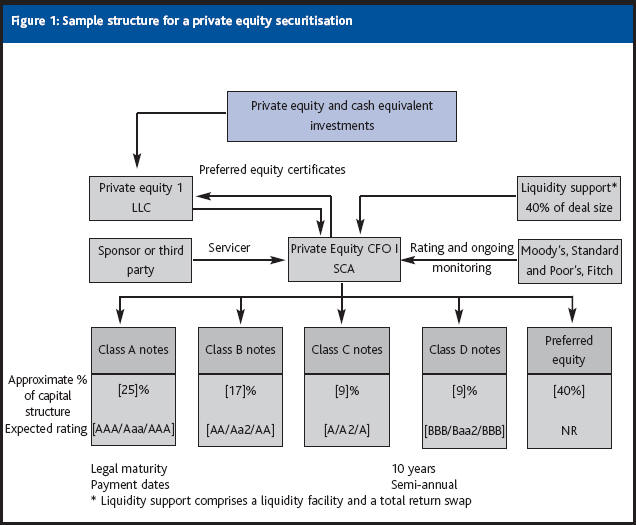

A credit, the opposite of a debit, is an entry on the right side of the T-account. It increases liability, expense, and owner’s equity accounts and decreases asset and prepaid expense accounts. It can seem a little confusing to understand debits and credits, so let’s look at an example. Financial Statement Preparation – If the golden rules of accounting are followed, financial transactions will be recorded correctly. If the accounting is done correctly – financial statements like profit and loss statements, trading accounts, and balance sheets could all be created rapidly.

Company A comes as the receiver when it gets funds or credit from another firm or individual. In the event of a personal account, the other business or individual who contributes to it becomes the giver. Each transaction would have a debit and a credit entry and will be assigned to one of the three types of accounts shown below. CAs, experts and businesses can get GST ready with ClearTax GST software & certification course. Our GST Software helps CAs, tax experts & business to manage returns & invoices in an easy manner. Our Goods & Services Tax course includes tutorial videos, guides and expert assistance to help you in mastering Goods and Services Tax.
Accountants believe that the market worth of something is merely a subjective judgment. There are so many different points of view that accountants cannot account for them all. It is true since something was purchased and the selling price was verified. As a result, accounting is built on the cost principle and facts. If management knows that activities will be suspended soon, standard accounting will be discontinued.
Goods and Service Tax (GST): A Complete Guide
In these cases, the debit side entry is made when a bill payment is made and when you have a refund that is received, you would make an entry on the credit side. This is an account where the money is payable to other corporates or individuals by a firm. These are categorised as Accounts Receivables, Loans Payable, Income tax payable, and any bank fees that the company needs to pay.
- The double entry system of accounting maintains comprehensive, chronological records of every single transaction that a business enters into.
- The debit is passed when an increase in assets or decrease in liabilities and owner’s equity occurs.
- Suppose we purchase machinery for the cash, this transaction will increase the machinery and decrease cash because machinery comes in and cash goes out of the business.
- Thus, the double-entry system ensures accuracy in the books of accounts and the final balance sheet.
- Incentives worth Rs 2,600 crore have been approved for FY22-23 by the cabinet.
- Further, this increase in machinery and the decrease in cash are to be recorded in the machinery account and cash account respectively.
Conversely, credits decrease expenses or assets and increase equity or liability. Let’s review the basics of Pacioli’s method of bookkeeping or double-entry accounting. On a balance sheet or in a ledger, assets equal liabilities plus shareholders’ equity. An increase in the value of assets is a debit to the account, and a decrease is a credit. On the other hand, when a utility customer pays a bill or the utility corrects an overcharge, the customer’s account is credited. If the credit is due to a bill payment, then the utility will add the money to its own cash account, which is a debit because the account is another Asset.
Accounting Under the Double-Entry System
To get a fair idea of the extent and nature of the financial transactions that have taken place. Upgrade your Bill Payment digitally using AP automation, or accounts payable automation by technology switch to a revolutionized way for business. Bajaj Finserv DBS Bank Credit Card comes in 8 variants while the Bajaj Finserv RBL Bank credit card, also known as the Baja Finserv RBL Bank SuperCard offers 19 unique variants. This blog is part of our Bookkeeping for Founders series, where we explain the basics of accounting to help founders get a better understanding of their finances.
Some examples of personal accounts are customers, vendors, salary accounts of employees, drawings and capital accounts of owners, etc. Generally, all accounts that contain a debit balance will increase in amount when a debit is added and decrease in amount when a credit is added. Expenses accounts look into matters about rent, payment of utilities, and payroll and office supplies.
DEBIT is an application of resources
You just recorded an accounting transaction even without looking at the golden rules of accounting. For example, a copywriter buys a new laptop computer for his business for $1000. He credits his technology expense account $1000 and debits his cash account $1000.
What are the 5 rules of debit and credit?
- Firstly: Debit what comes in and credit what goes out.
- Secondly: Debit all expenses and credit all incomes and gains.
- Thirdly: Debit the Receiver, Credit the giver.
It is basically an entry that records an amount that is recorded on the left-hand side of the accounts. Debit in an account shows an addition to the account of assets or expenses. In other words, debit denotes a reduction in a liability account. Owners’ equity, a credit account, includes capital invested by the original investors and retained earnings and surplus. The overall value of your assets must equal the value of your liabilities plus the value of your equity. Calculate the ending balance in each account and update the balance sheet.
What is the Double Entry System of Accounting?
Recently, the price has formed a higher low and managed to surpass the resistance of a falling trendline on a closing basis. This move will be considered as a breakout and is expected to propel the price higher. Credit money is the value created by making claims, obligations, or debts for the future.
You can swipe a credit card to make a payment online or offline for almost all products and services. After youapply for a credit card and begin to use it, make sure that the amount you have borrowed or utilised is repaid within the stipulated time frame to avoid penalty charges. To avoid fraud, don’t share your credit card information with anyone. The key difference between a credit card and a debit card is that money gets deducted from your bank account when you swipe a debit card. In the case of a credit card, the money is taken from your credit limit. When the business receives something, then the account must be debited and when the business gives something then the account must be credited as per this rule of accounting.
Product Reviews Unbiased, expert reviews on the best software and banking products for your business. For each financial transaction made by a business firm that uses double-entry accounting, a debit and a credit must be recorded in equal, but opposite, amounts. If all earnings and profits are credited, the capital will increase. Credit can also mean a person’s or business’s ability to pay back debts or credit history. A change to a company’s balance sheet lowers its assets or raises its liabilities or equity.
This is because his technology expense assets are now worth $1000 more and he has $1000 less in cash. Apart from this, a business can also issue a debit note as a response to the credit note that they receive from the opposite party. Many other situations in which a debit note can be issued include mistakes in the interest charges, fees, concept of debit and credit or mistakes in the sales, purchases, and loan invoice. In such cases, a debit note is issued by the company or business in an effort to correct the mistake at hand. To understand the basic concept of debit, you can consider a situation as an example in which a company has availed a loan from a lender to buy some new business equipment.
Knowing about debits and their impotence will help you a great deal in managing your finances well. Credit can also mean how much money a person or business can borrow or how creditworthy they are. They have good credit, so they aren’t worried that the bank will turn down their mortgage application. Credit rating companies look at the creditworthiness of people and companies and make reports about it . Debit cards are more like electronic check that enables the holders to withdraw money from the checking account.
What is an example of debit and credit?
Say you purchase $1,000 in inventory from a vendor with cash. To record the transaction, debit your Inventory account and credit your Cash account. Because they are both asset accounts, your Inventory account increases with the debit while your Cash account decreases with a credit.
For instance, if a company loans a piece of equipment, the fixed asset would be debited while the liability account is credited. Hence, in the journal entry, the Loan account will be debited and the Bank account will be credited. Commercial transactions are events that have a financial impact on an organization’s financial statements. When you do these transactions, you record numbers in two accounts.
For dissolution purposes, a special type of accounting is used. As you have to explain this to a lay man, Debit and Credit is nothing but a terminology used in accounting but for a lay man debit means given and cerdit means received . Amount which he is required to pay to outsider is the credit balance. Can anyone explain how to make a lay person understand, what is debit and what is credit.
When one credits an account it means that there is a negative amount within that account. Increase in liabilities due to increased amounts in the payable results in the outcome being increased by a negative amount. We aim to complete your annual accounts well ahead of schedule to ensure you have complete financial records. Show bioRebekiah has taught college accounting and has a master’s in both management and business. Accounting Game – Debits and Credits is designed to challenge and teach common accounting transactions in a visually entertaining and engaging way.
Our Companies
In order to credit (cr.) an account, the entry of the amount is to be made on the right hand side of the accounting book. The normal balance of all assets and expenditures accounts is always debited. We shall record the increment of this account on the debit side. If we need to decrease the account, we will record it on the credit side. This system of visualizing transactions in debits and credits shows us the flow of money – where the money is from and where it’s going. Every transaction recorded with the double entry system has a debit and its corresponding credit.

The assets and liabilities plus equity in the balance sheet of the double-entry bookkeeping system should be equal. If they are not equal, the entries in the books are wrong and indicate that the journal entries are wrong. Thus, the double-entry system ensures accuracy in the books of accounts and the final balance sheet. In addition, it helps accountants to reduce mistakes by being accurate. The definition of double-entry bookkeeping is an accounting method where a transaction is equally recorded in two or more accounts. A debit is made in at least one account and a credit is made in at least one other account.
What is the concept of debit?
Debits represent money being paid out of a particular account; credits represent money being paid in. In a standard journal entry, all debits are placed as the top lines, while all credits are listed on the line below debits.
